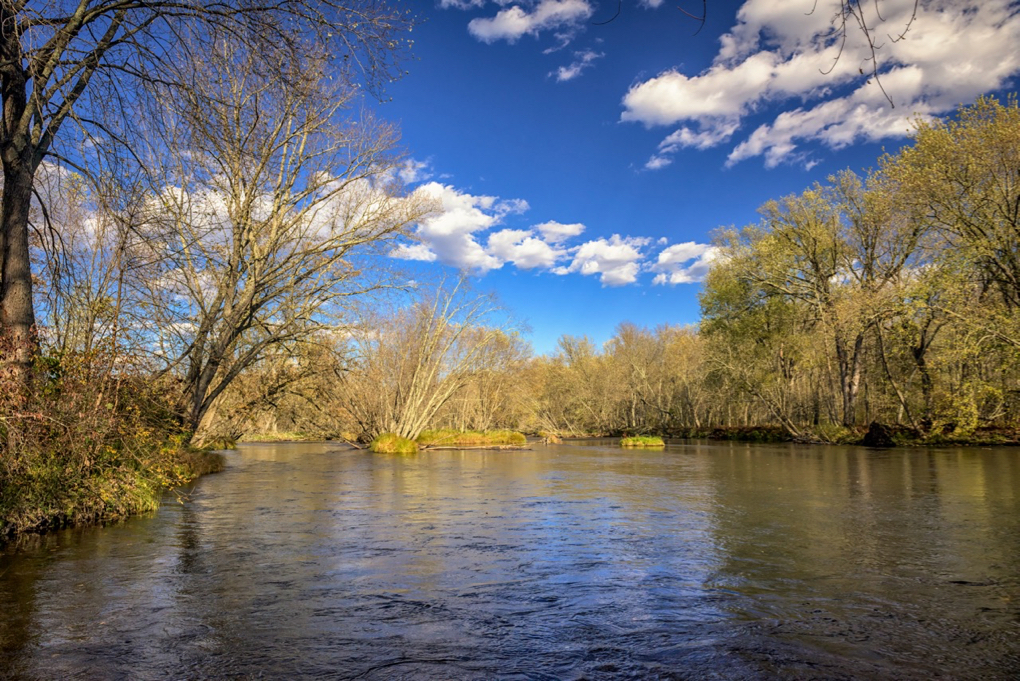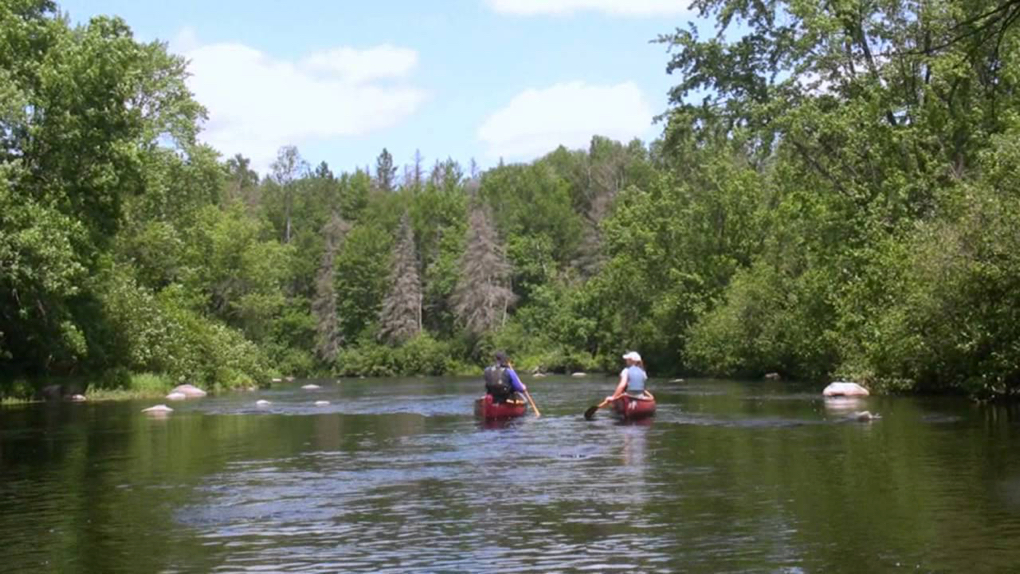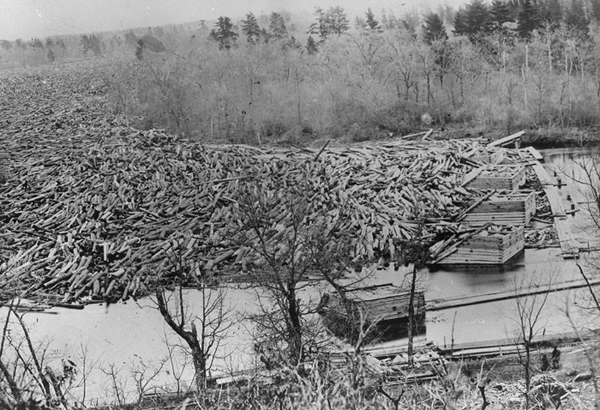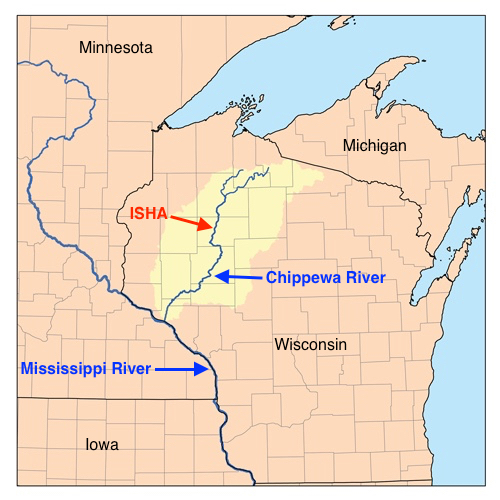Dear Friends,
Ishwar has told the story of how the dera in India was established along the Beas River, and how the ISHA site in Wisconsin was chosen in a similar way, along the Chippewa River. The ISHA land in Bruce, Wisconsin has riverfront access to the Chippewa River, so here’s some information on the river itself.
The River Beas in Himachal Pradesh, northern India

The State of Wisconsin is blessed with over 12,600 rivers and streams. Wisconsin also has over 15,000 lakes, the second-most in the continental US, after Minnesota.
The lovely Chippewa River flows 183 miles (294 km) through west-central and northwestern Wisconsin. The river is formed by the confluence of the West Fork Chippewa River, which rises at Chippewa Lake in southeastern Bayfield County, and the East Fork Chippewa River, which rises in the swamps of the southern part of the Town of Knight in Iron County, Wisconsin. The confluence of these two upper branches is at Lake Chippewa, a reservoir in central Sawyer County, which is the official “beginning” of the Chippewa River. The river flows from Sawyer County through Rusk, Chippewa, Eau Claire, Dunn, Pepin, and Buffalo Counties before joining the Mississippi River.
The river is the centerpiece of the Upper Chippewa River Basin. The river’s primary tributaries are the Couderay, Thornapple, Flambeau, Brunet, Jump, Fisher, Yellow, Eau Claire, Red Cedar, and Eau Galle Rivers, collectively draining an area of over 4,600 square miles, roughly the size of the State of Connecticut.
The river has a deep and wide canyon, which was likely eroded out during large water discharges when the enormous continental ice sheets melted at the end of the last great Ice Age approximately 12,000 years ago.
This wide, scenic river flows through a rural countryside of mixed hardwood and softwood forests, beautiful meadows, dairy farms, and agricultural communities. Lush forests of birch, oak, maple, basswood, aspen, and conifers commonly overhang the shoreline.
The Chippewa River at the ISHA site near Bruce, Wisconsin

The Chippewa River is a popular destination for recreational kayakers and canoers, who can experience a variety of conditions on the river, from calm, slow-moving water to small rapids and whitewater. The river is known for its healthy fish habitat, which are home to muskellunge, smallmouth bass, walleye, and northern pike.
Major lakes along the river include the Radisson and Holcombe Flowages, Lake Wissota, and Dell’s Pond, all of which are reservoirs. The largest reservoir by far is the Chippewa Flowage, which is the 3rd largest “lake” in Wisconsin, and located only about 25 miles north of the ISHA site.
Canoeing on the Chippewa River

The Chippewa River was enormously important to the early logging industry. The entire basin was logged from the 1850s to about 1906. The river provided a way to float cut timber from the rich forests of northern Wisconsin to the Mississippi River.
The Chippewa River watershed held vast areas of Wisconsin’s pine forests in the 1800s. Before logging, the Chippewa Valley is estimated to have held about 46,000,000,000 board feet of lumber. Frederick Weyerhaeuser described it as “a logger’s paradise, a very large part of its area being heavily forested with the finest quality of white pine timber, while rivers, streams, and lakes offered an excellent network of transportation facilities.”
The first sawmill in the Chippewa Valley was built near Menomonie around 1831. By 1840, sawmills were also operating at Chippewa Falls. Although floods destroyed these early mills, the lumbermen rebuilt them, and in the late 1800s, Chippewa Falls was said to have the worlds largest sawmill under one roof.
By the 1850s, the loggers were binding the sawed pine trees into rafts which were guided down the lower Chippewa River to markets on the Mississippi River. Above Chippewa Falls, though, the river was too rough and rocky for large rafts, so masses of individual logs were driven down by log drivers, sometimes called “river pigs.” Sounds like dangerous work!
To make the drives more efficient and reliable, the loggers made modifications to the river by dynamiting troublesome rocks, cutting trees that would snag logs, building up the banks in places, and selectively damming the river and its tributaries. Around 1876, a dam and log-sorting works was built between Eau Claire and Chippewa Falls. Over the Chippewa and its tributaries the loggers built at least 148 logging dams, of various sizes and purposes.
Floating logs down the Chippewa River

The original inhabitants of this part of Wisconsin, known as the Ojibwe people, controlled most of the upper Chippewa Valley and its tributaries until the Treaty of St. Peters in 1837. They called the river the “Ojibwe.” This name is commonly anglicized as “Ojibwa” or “Ojibway,” and the name “Chippewa” is yet another anglicization. “Chippewa” is more common in the United States, and “Ojibway” predominates in Canada, although both terms are used in each country.
Visitors to the site of the ISHA Meeting Hall will be able to relax along the banks of the Chippewa River when sevadars complete a trail and bridge that will link the Meeting Hall to the west bank of the river, perhaps by next summer.
With warmest regards,
Paul Bauer
Chair of ISHA Building & Fund-Raising Committee

